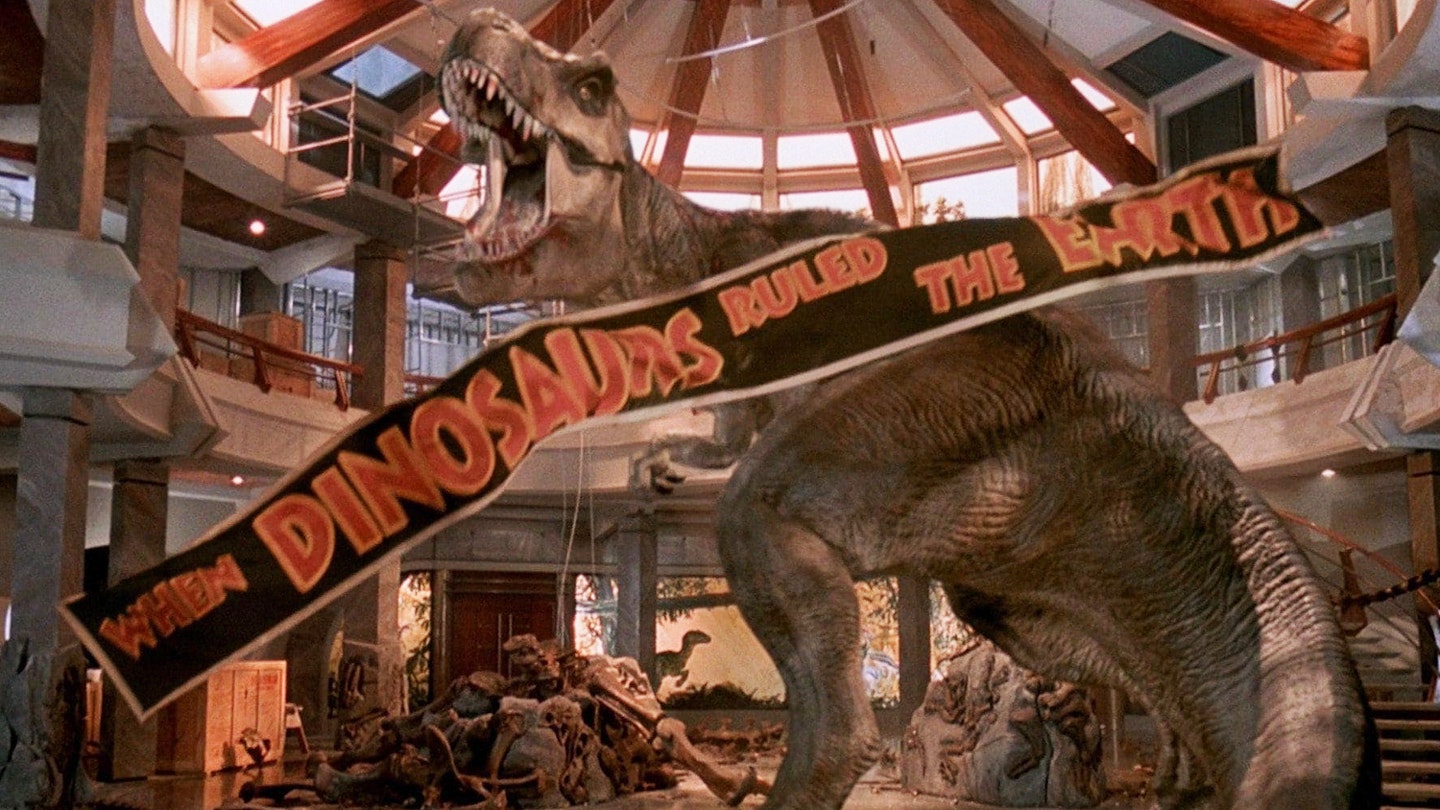The DNA of the summer blockbuster will forever be infused with that of Steven Spielberg. In 1975, Jaws changed the game – an event movie that literally had people queueing down the street to watch it (hence the phrase ‘block-buster’), desperate to escape the heat and experience two hours of oceanic terror in an air-conditioned cinema. The Hollywood landscape was never the same. But while it was Jaws that invented the blockbuster, for a generation of movie-goers it was another Steven Spielberg film that perfected it, nearly two decades later. In the summer of 1993, the director delivered an adventure 65 million years in the making – a monster movie of sorts, boasting groundbreaking computer effects, bigger teeth than Bruce the shark, and a promise to do the impossible: to bring dinosaurs back from extinction before your very eyes. “Welcome… to Jurassic Park.”
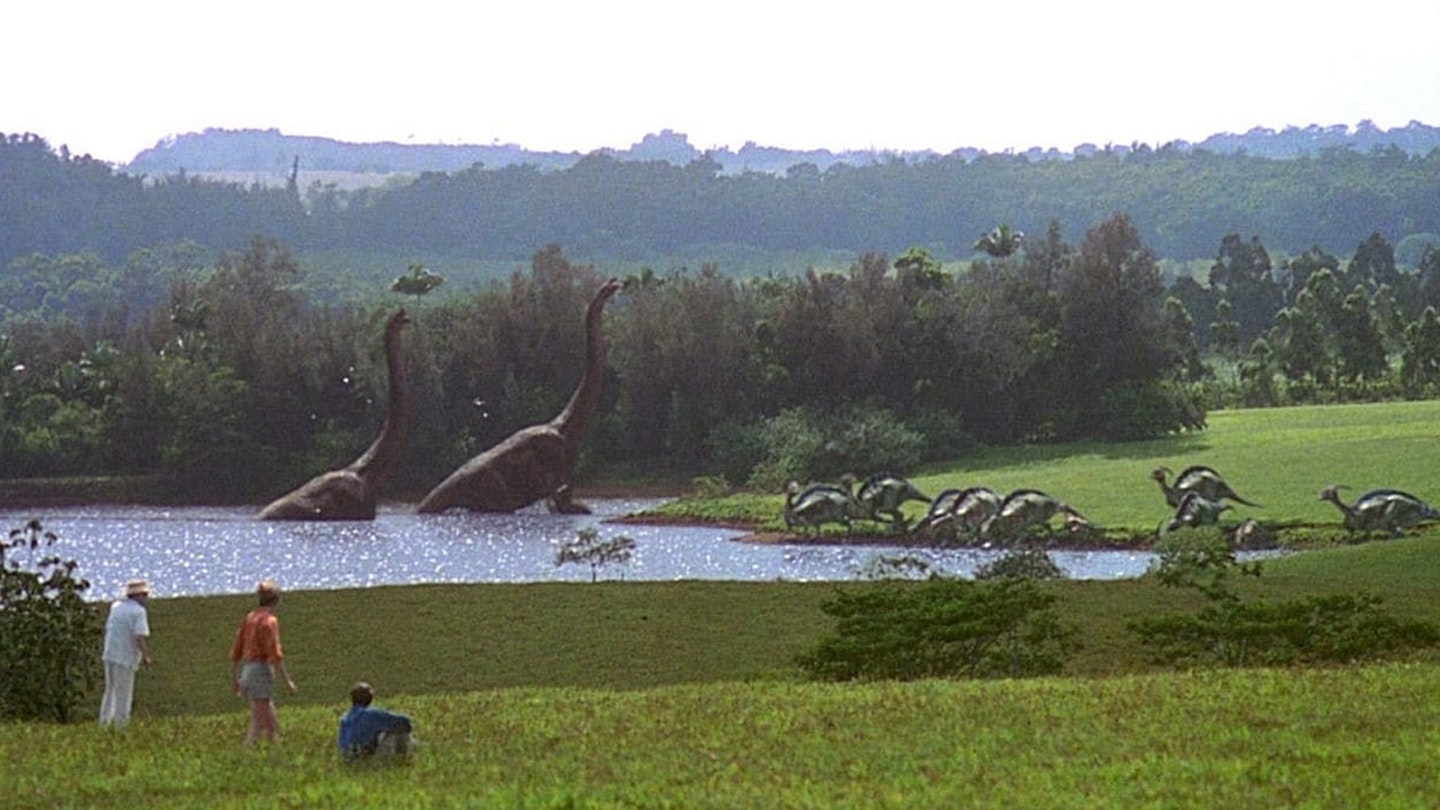
There are several building-blocks needed to create the perfect blockbuster movie – it’s not just about action sequences. It’s about tension and release, about taking the audience on a ride. And perhaps most importantly, it’s about creating a sense of awe and wonder, about conjuring impossible images that could only play out on the cinema screen. Then – and now, 30 years later – Jurassic Park excelled on every front. It’s an exquisitely-crafted theme park ride of a movie, itself about the nature of theme park entertainment and simulated thrills. At the time, it became the biggest movie ever made – audiences utterly transported and transfixed by that first glimpse of the Brachiosaur (“They do move in herds,” says Sam Neill’s teary-eyed Dr. Alan Grant, his sincere amazement echoing that of everybody watching), and terrified by the time the T. rex rampage ramps up.
Jurassic Park's dinosaurs aren't just believable; they make you want to believe.
It was, in many ways, the perfect storm. Michael Crichton’s original novel brought plausible-enough science to the idea of resurrecting prehistoric beasts, and spun a scary, ideas-driven take on chaos theory, capitalism, and the corruption that inevitably occurs when man plays god, out of a pure popcorn premise: what if a wealthy industrialist cloned dinosaurs for our entertainment? Meanwhile, in the decades post-Jaws, Spielberg had retained his place at the top of the blockbuster food-chain, still the apex predator of cinematic spectacle – following up his shark-attack showdown with tales of alien invasion (Close Encounters, E.T.) and the adrenaline-pumping action-adventures of Indiana Jones. And by the early ‘90s, visual effects technology had just about evolved to the point that Spielberg could deliver an all-new kind of spectacle: photo-real, digitally-created dinosaurs.
If the execution was all-new – the team at Industrial Light & Magic pushing the limits of what was possible with the computer technology of the day – then the intention reached back to the earliest days of cinema. From 1914’s animated short Gertie The Dinosaur, through decades of stop-motion dinosaurs like those of 1925’s The Lost World and 1933’s King Kong, to the ‘Rite Of Spring’ sequence in Disney’s Fantasia in 1940, the movies have always had a fascination with prehistoric life. In what other medium could people vicariously visualise these now-fossilised creatures? It’s one thing to discover a gigantic skeleton in the desert – another entirely to imagine what it might have been like when alive. With their sheer size and exaggerated predatory features, dinosaurs were almost tailor-made to be B-movie monsters.
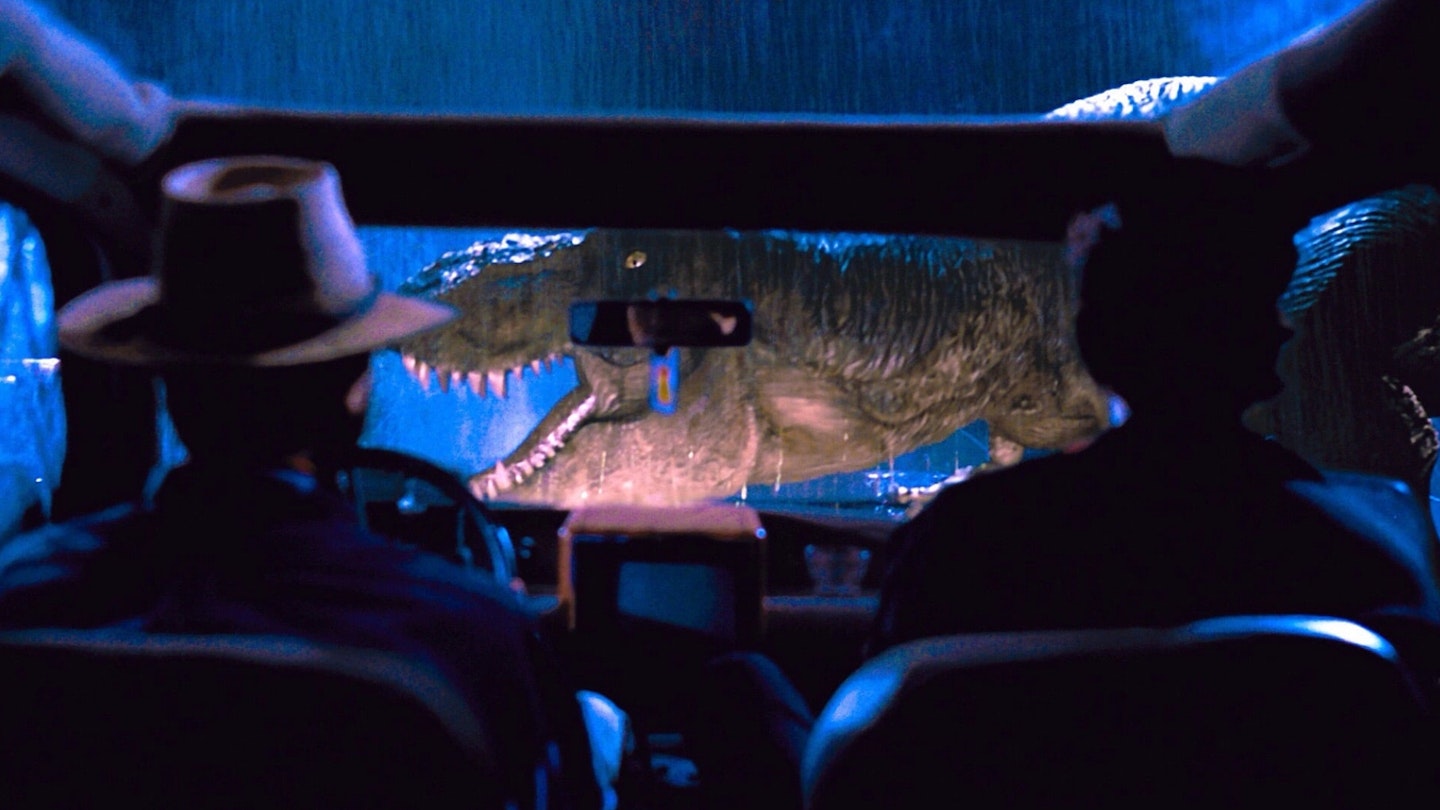
For all the beauty of those early stop-motion efforts, Jurassic Park’s painstakingly-crafted computer effects were an evolutionary leap – these dinosaurs truly felt real. Under Spielberg’s expert eye, they were deployed with complete care and precision. Across the film’s two-hour-plus runtime, there are only six minutes of CGI effects – and every time they do appear, it’s in shots that have been specifically calibrated to the possibilities of a nascent technology, seamlessly blending CGI with Stan Winston’s astonishing animatronics, and playfully-performed puppetry. After three decades, there are many reasons why Jurassic Park still looks as good as it does. It’s not just the technical craft – it’s the level of personality imbued into the Park’s various inhabitants. The T. rex is a machine of pure terror; the Velociraptors cunning and unpredictable; the frill-necked Dilophosaurus blending mischief into malice; the Brachiosaurs gentle giants; the Triceratops a creature of sheer beauty. They’re not just believable; they make you want to believe.
That sense of belief and creation underpins Jurassic Park’s thematic concerns. Beneath all the thrills, the film is in dialogue with itself – the ultimate cinematic spectacle, interrogating the implications of its own existence. Park owner John Hammond intended to create a place that felt like the flea circus of his own youth come to actual life; Spielberg is, essentially, doing the same with the dinosaur films he grew up on. ‘Chaotician’ Ian Malcolm decries Hammond’s capitalistic instincts, hitting out at the idea of this reality-disrupting technology being “slapped on a plastic lunchbox”; later, the film features real Jurassic Park merchandise (plastic lunchboxes included) in the fictional Park’s gift shop. Old-school paleontologist Alan Grant is introduced at a dinosaur dig, where burgeoning computer technology threatens to render his long-hones skillset obsolete; legendary effects animator Phil Tippett (the ‘Dinosaur Supervisor’ of Jurassic Park’s famously-memed credit) had planned to create the Velociraptors in stop-motion, before his work was used as reference for CGI. Throughout the film, Jurassic Park seems aware of its own significance in the blockbuster landscape – of the technology it pioneered, and the butterfly effect that it might induce. Among the excitement, there’s an undercurrent of caution.
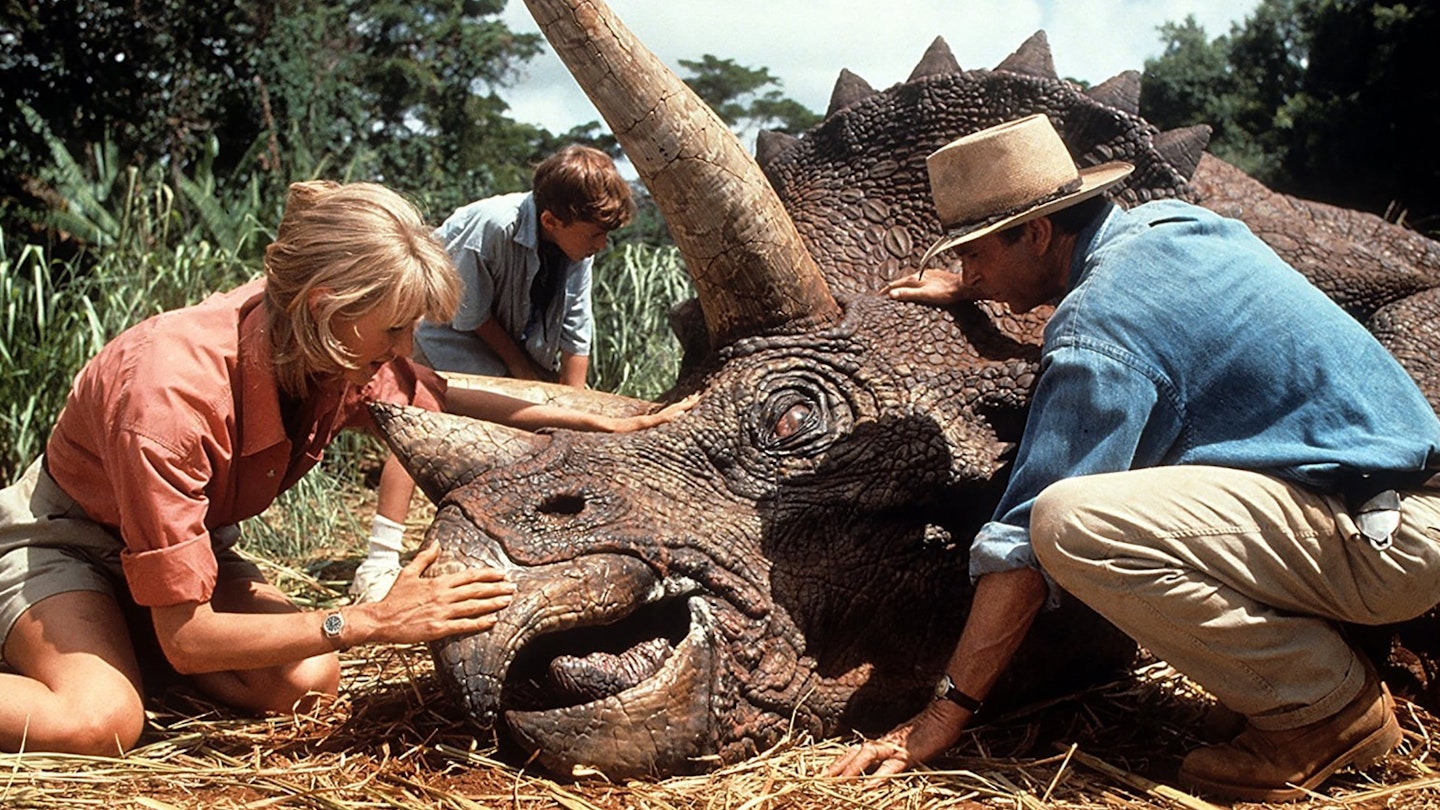
Whether or not Spielberg’s apparent fears for the future of Hollywood spectacle were well-founded (many would make arguments both for and against), there’s no denying that Jurassic Park itself is masterful. The phrase ‘Spielberg magic’ might seem rote – but what better, or more succinct, way is there of expressing the sheer spine-tingling exhilaration of seeing the legendary director working at this level? The setpieces here – the T. rex attack, the kitchen Raptor showdown, Ellie bringing the power back online – are cinematic symphonies, but the orchestral warm-ups are just as thrilling: the rippling water glass as the T. rex approaches; Lex’s wobbling spoonful of green jelly; Nedry being taunted by the Dilophosaurus. These none-more-Spielbergian images are tantalising teases to the audience that it’s about to kick off. He lets these moments breathe, all while ensuring the viewer is holding theirs.
Where subsequent Jurassic sequels went ostensibly bigger, there was no recapturing that absolute awe.
Perhaps the great irony of Jurassic Park is that it soars because it isn’t all spectacle. Its unusual roster of human heroes – three scientists, experts in the fields of paleontology, paleobotany, and, er, chaos – have, over time, proved just as appealing as the dinosaurs. The eventual reunion of Sam Neill, Jeff Goldblum and Laura Dern in last year’s Jurassic World Dominion was perhaps that film’s biggest selling point – recognition that Alan, Ian and Ellie have achieved their own legendary status. They’re not action heroes, nor are they completely ordinary – they’re smart, and informed, and their distinctive personalities (Alan’s slightly misanthropy, Ian’s rockstar energy, Ellie’s tempered ebullience) play off each other beautifully. David Koepp’s script spends an entire hour establishing them before the dinosaurs are unleashed – and when the fences go down, our awe and fear is entirely channelled through theirs.
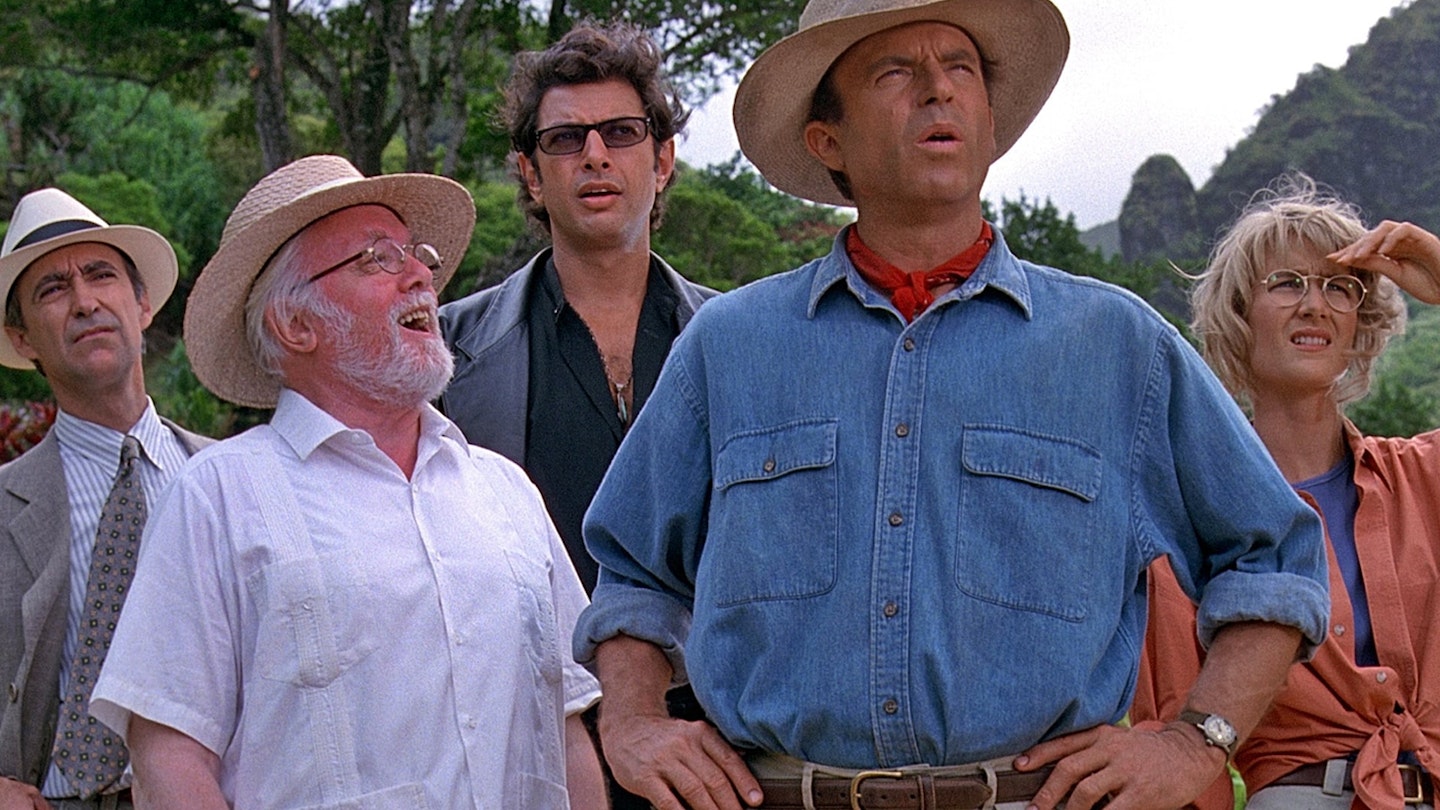
After 30 years, Jurassic Park remains the ultimate blockbuster movie. It’s a perfect balance of thrills, brains, and heart, delivered by a director with an innate understanding of what audiences want, and what they actually need. It’s telling that Jurassic Park spawned several smash-hit sequels in the years since – despite Brachiosaur-sized box office receipts, none have quite been able to touch the original. How could they? Not even Spielberg himself could manage it with 1997’s The Lost World: Jurassic Park. Where subsequent Jurassic sequels went ostensibly bigger, there was no recapturing that absolute awe – the sheer wonder of seeing dinosaurs roaming on the big screen like that. Spielberg achieved Hammond’s dream – to take childhood imagination and render it real – with none of the catastrophic consequences. Three decades ago, he made us believe in movies, in magic – and, most crucially, in massive T. rexes. All these years later, Jurassic Park still rules the Earth.
